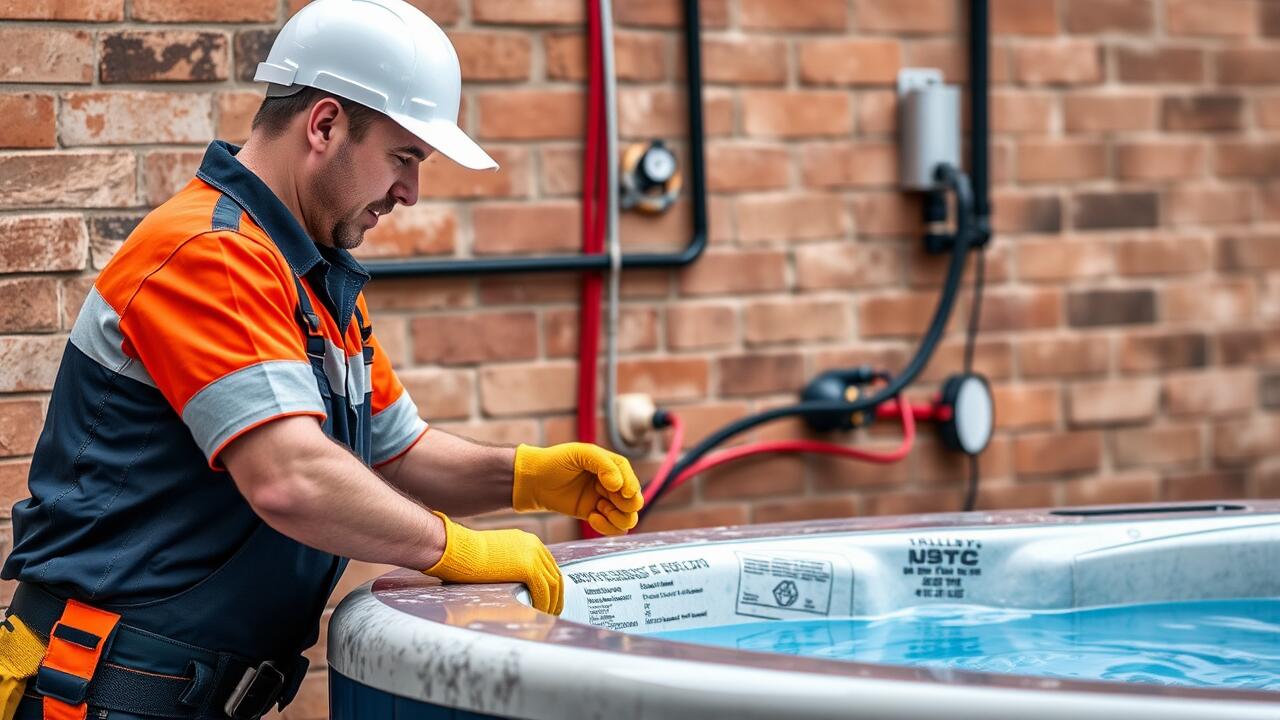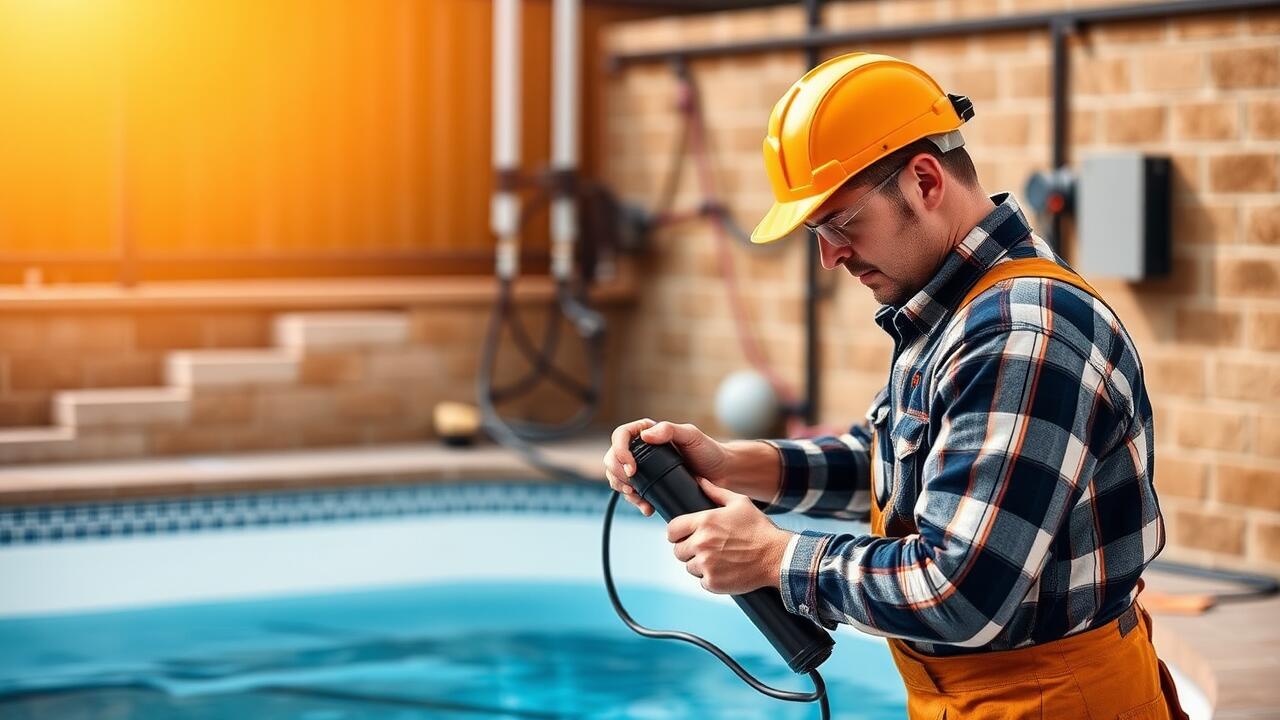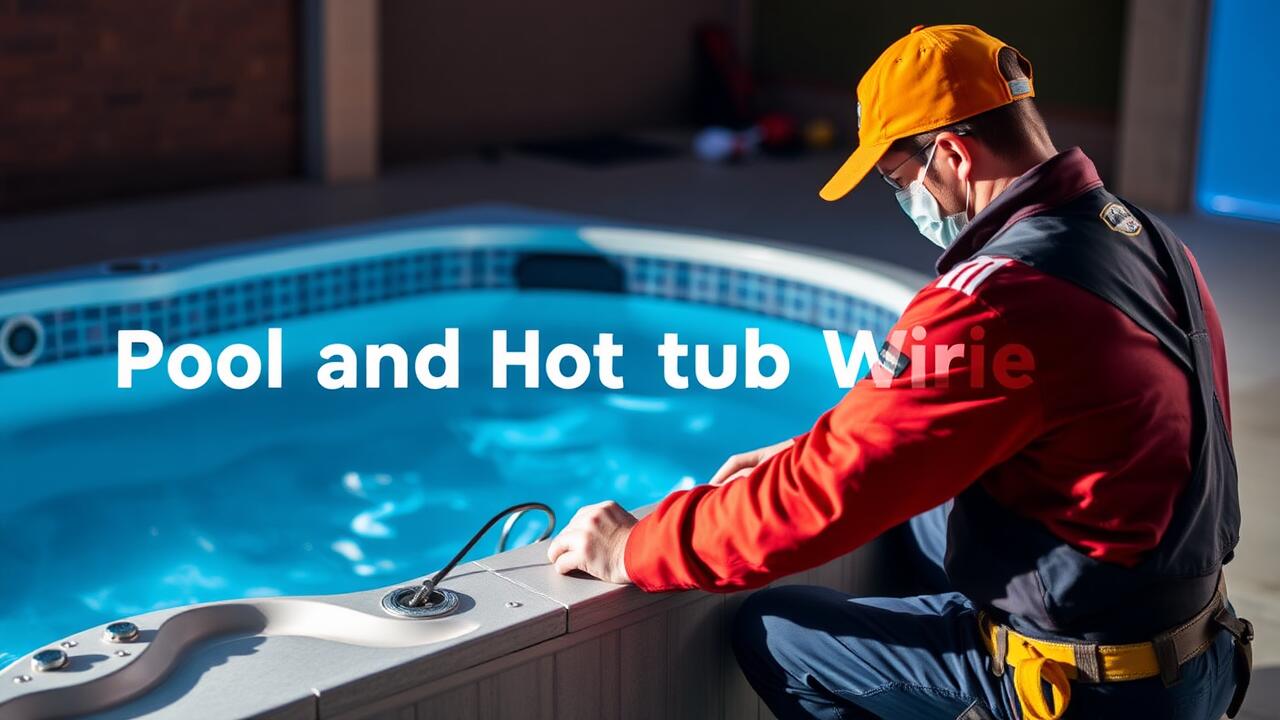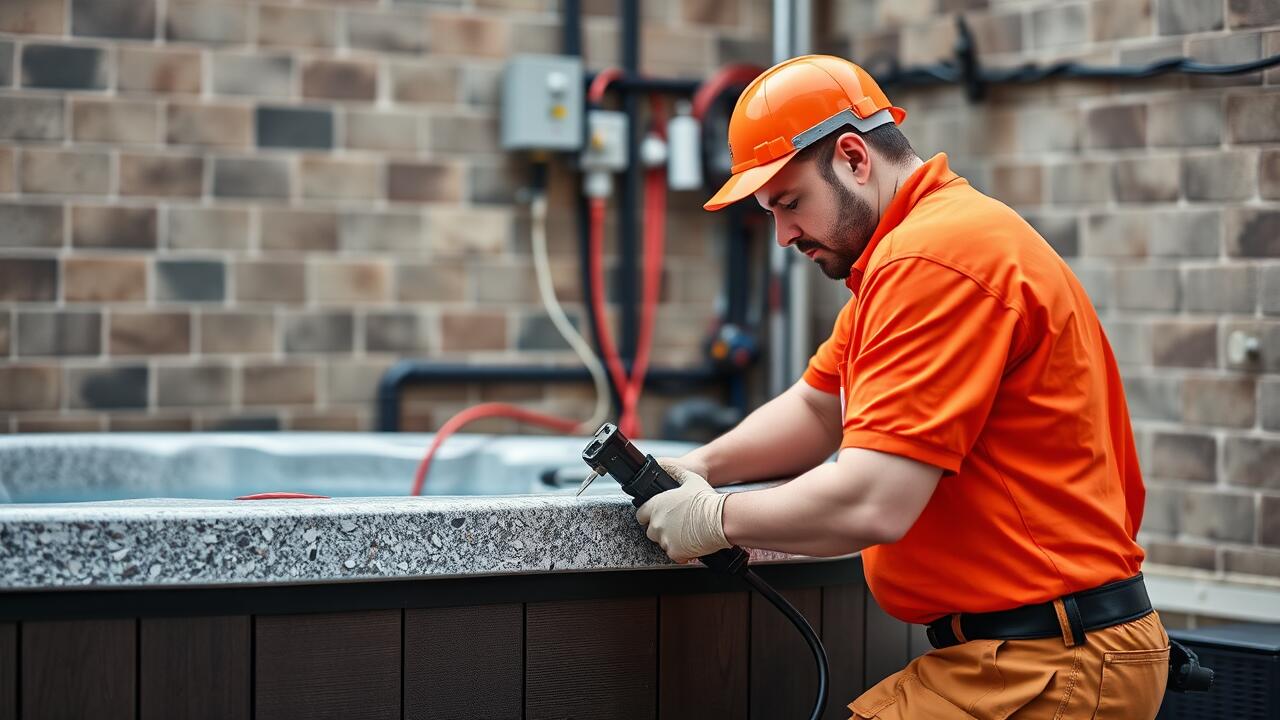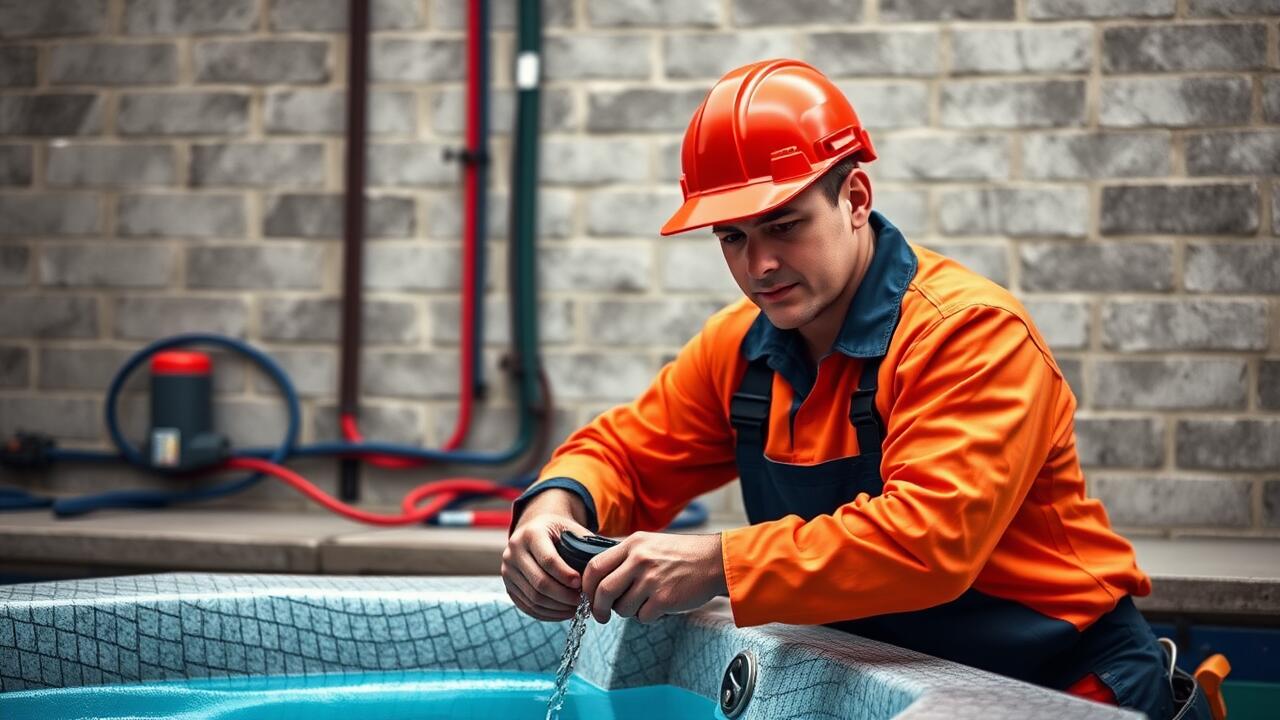
Installation Depth Requirements
When installing pool lighting, meeting the necessary depth requirements is crucial for ensuring safety and compliance. Wiring for underwater lights should be buried at a minimum depth of 12 inches of soil. This depth provides adequate protection from physical damage and reduces the risk of accidental contact. Local codes may have specific regulations, so it's essential to consult those guidelines before proceeding with the installation.
Understanding the installation depth also applies to the surrounding areas of the pool. For example, any wiring associated with pool lighting that runs near the water's edge should comply with the strict depth regulations dictated by the National Electrical Code (NEC). This is particularly important in areas such as Alief, Houston, where outdoor conditions can vary. Proper adherence to these depth requirements helps promote safety and longevity in your Pool and Hot Tub Wiring in Alief, Houston.
Safe Depth Practices for Underwater Wiring
When installing underwater wiring for pool lighting, adhering to depth requirements is essential for both safety and functionality. Typically, wiring should be buried below the frost line to prevent damage from freezing conditions. The National Electrical Code (NEC) specifies that wiring must be at least 12 inches deep if it is buried directly in the ground, ensuring protection against accidental impacts and environmental influences. For locations like Pool and Hot Tub Wiring in Greenspoint, Houston, professionals must consider local conditions, such as soil type and moisture levels, to determine the most appropriate depth for installation.
It is crucial to use appropriate conduit materials when running wiring underwater. The NEC recommends using PVC conduit or other suitable waterproof materials to protect the wiring from water exposure and to meet local regulations. Proper sealing of conduit joints is important to prevent water intrusion, which can deteriorate wiring insulation over time. Inspecting the complete assembly after installation ensures compliance with safety standards and promotes long-lasting performance, which is vital for the success of any project involving Pool and Hot Tub Wiring in Greenspoint, Houston.
Circuit Breaker Requirements
When planning the electrical layout for pool lighting, selecting the appropriate circuit breaker is crucial for both functionality and safety. Circuit breakers serve to protect the electrical system by tripping when there is an overload or short circuit. For pool lighting, it is typically advised to use ground fault circuit interrupter (GFCI) breakers. These devices are specifically designed to enhance safety in wet environments, cutting off electricity within milliseconds if they detect any imbalance in electrical current.
In regions like Houston, where Pool and Hot Tub Wiring regulations are strictly enforced, it is essential to adhere to local codes when choosing circuit breakers. Using dedicated circuits for pool lighting can help prevent interference from other devices and ensures that the pool area remains safe. Installation of the correct amperage rated breakers according to the lighting load will not only enhance safety but also optimize performance.
Selecting the Right Circuit for Pool Lighting
When selecting the right circuit for pool lighting, it is essential to choose one that adheres to local electrical codes. These codes will typically specify minimum requirements for load calculations and circuit types. For most residential applications, a dedicated circuit is necessary to ensure that the lighting operates independently from other household devices. This prevents overload and ensures the system functions correctly without tripping breakers frequently.
Considering the specific requirements of Pool and Hot Tub Wiring in Alief, Houston, it is advisable to consult with a licensed electrician familiar with local regulations. Different types of circuits, such as GFCI-protected circuits, may be required due to the proximity of water. Choosing the right circuit not only ensures compliance but also enhances safety by protecting against potential electrical hazards associated with pool usage.
Bonding and Grounding Techniques
Effective bonding and grounding techniques are crucial for ensuring safety around pool and hot tub installations. Proper bonding connects all metallic components to eliminate voltage differentials, reducing the risk of electrical shock. Grounding provides a path for fault currents to flow safely into the earth, further protecting users from potential hazards. Adhering to local codes and guidelines is essential for implementing these methods, particularly in environments like Pool and Hot Tub Wiring in Alief, Houston.
Installers should utilize bonding jumpers to connect various pieces of equipment, such as pool ladders, railings, and light fixtures. These jumpers help ensure that any stray electrical currents are safely redirected. The grounding system should also include a grounding electrode connected to the main electrical panel. This connection reinforces the safety mechanism required by regulations and industry standards, significantly enhancing the overall safety of pool and hot tub environments.
Ensuring Electrical Safety Around Water
Electrical safety around water is paramount, especially in residential settings where pools and hot tubs are common features. Ensuring that all wiring is correctly installed and maintained can prevent dangerous situations. It's essential to use equipment and materials rated for wet locations to reduce the risk of electrical shock. Additionally, the installation must comply with local codes and regulations to guarantee safe operation.
Proper bonding and grounding techniques are crucial for protecting individuals using pool and hot tub facilities. Ground fault circuit interrupters (GFCIs) should be installed to monitor electrical current and provide immediate disconnection in case of faults. For residents seeking assistance with this aspect of electrical safety, Pool and Hot Tub Wiring in Greenspoint, Houston, offers experience and guidance tailored to local safety standards.
FAQS
What is the minimum installation depth for underwater pool lighting wiring?
The minimum installation depth for underwater pool lighting wiring typically varies by local codes, but it is generally required to be buried at least 18 inches below the surface to ensure safety and compliance.
What are safe depth practices for underwater wiring in pools?
Safe depth practices include ensuring wiring is installed below the frost line, using conduit to protect the wiring, and following local code regulations for installation depth to prevent damage and hazards.
What circuit breaker is recommended for pool lighting?
It's recommended to use a GFCI (Ground Fault Circuit Interrupter) circuit breaker for pool lighting to enhance safety by providing protection against electrical shocks and faults.
How do I select the right circuit for my pool lighting?
To select the right circuit for pool lighting, consider the total wattage of the lights, the distance from the power source, and local electrical codes. It's advisable to consult with a licensed electrician for proper circuit sizing.
What bonding and grounding techniques should I use for pool lighting?
Bonding and grounding techniques for pool lighting should include connecting all metal components of the pool and lighting fixtures to a common bonding point, and ensuring that the electrical system is grounded according to local codes to prevent electrical shock hazards.
